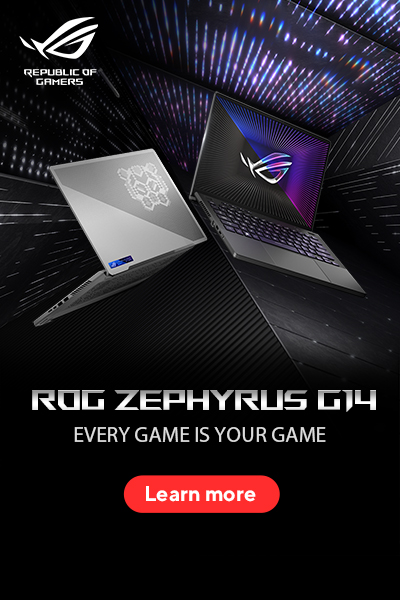In celebration of the 26th anniversary of the Mega Man franchise, this edition of Critical Eye will focus on the man behind the creation of the Blue Bomber; Keiji Inafune.

Born on May 8, 1965, Keiji Inafune started his career as an graphic designer at the age of 22, after graduating from college, he landed a job at Capcom as an illustrator for Street Fighter in 1987, which became a hit in the arcades and returned with a sequel which many are now familiar; Street Figther II. And with the instant success of Nintendo’s Family Computer System, Capcom focused more on developing new games for the home console instead of just porting arcade games to the console, so Inafune was promoted to be the lead character designer for their ‘Rockman’ project.
Mega Man Project
During the project, the Rockman (renamed to Mega Man for the western audience) idea was already conceptualized so Inafune did the character art and designs for the game, he also did the pixel art for the characters, as well as the game logo, package and manual design. Due to the color limitations of the Famicom (NES in Amercia), which only have 56 colors and majority are blue-tinted, he decided to color the character to blue, hence having the nickname Blue Bomber, he also named some of the characters based on music genres (Rockman, Roll, Bass, Treble). With the release of the first Mega Man game in 1987, sales went well above Capcom’s expectations, but still not a huge success, but despite the sales figures, Capcom still gave the approval of Inafune’s request to launch a sequel.
The in 1989, Capcom launched Megam Man 2 and it was a big hit in both sales and reception, Keiji Inafune remarked that the second game was one of his favorite. As the game became a profitable franchise, Capcom decided to create more games of the series and ports it to other platforms in which Inafune become Producer in some titles.
Expanding the Franchise
With the 8-bit consoles began to dwindle in favor to their 16-bit console successors, Inafune began the development for the Rockman X project. During the development, Zero was originally planned to become the main character in the new series, but Capcom wanted to have Mega Man (referred as Mega Man X or simply X in the series) still have the leading role, so Inafune designed for both characters. Few years later, he finally launched Mega Man Zero with Zero as the main character for the Game Boy Advance in 2002.
Mega Man X was released for the Super Famicon (Super NES in America and Europe) in 1993 and the series continued in future consoles such as the Sony PlayStation 1 and 2. He was approached by Sony to create a Mega Man game exclusive to the PlayStation console, so he produced the third person shooter Rockman DASH (aka Mega Man Legends) series.
Megaman X5 was supposed to be the final chapter of the series so Inafune can start the development for Megaman Zero, but due to his departure to another studio, Capcom started the development of X6 which caused some inaccuracy in the series’ storyline. However this was adjusted with some minor changes in the storyline.
Inafune later developed a brand new series for the Mega Man franchise; Rockman.EXE (also known as Mega Man Battle Network), the idea of the game as Inafune explained came from observing his son. The Battle Network feature RPG and strategy elements which was different compared to the action shooting gameplay of the original. In 2005, he was promoted to senior corporate officer as head of Capcom Production Studio 2. Soon he was also involved with the creation of Mega Man ZX and Mega Man Star Force.
Beyond Megaman
With his recent promotion at Capcom, Inafune started creating new games that are outside the Megaman Franchise, he started developing the Onimusha series which sets at Feudal Japan, he then handled the project for Lost Planet: Extreme Condition where the setting of the game was based in John Carpenter’s The Thing.
Another recent project Inafune handled was the Dead Rising series which was inspired from George Romero’s zombie flick, Dawn of The Dead. He love the series so much that he went as far as directing the film adaptation of Dead Rising; Zombrex: Dead Rising Sun, a 8-part film that is available as a free download.
In mid 2010, Inafune was then promote again, this time as Global Head of Production. He made some harsh remarks to the Japanese game developers as he stated the they (Japanese developers) are way behind from the Western developers in terms of innovation. He even stated in an interview that he hated his job and wanted to retire early.
Then on October 29, 2010, Keiji Inafune announced on his personal blog that he will be leaving Capcom as he will ‘starting his life over’. He worked for Capcom for 23 years.
Life after Capcom
With his departure, Inafune formed two companies; Comcept and Intercept. Comcept was established on December of 2010 where it focuses on creating and distributing entertainment media such as mobile games, tie-in goods and other events. Intercept was established a month a Comcept and focuses more on game development that follows three important keys: “Originality — Cannot be copied by others”; “Gravity — Has the power to pull people in”; and “Beyond the Age — Things that cross era.”
In early 2011, Comcept was in a collaboration with Idea Factory and Compile Heart for marketing their game Hyperdimension Neptunia mk2, Inafune was even featured as a summon for the main character of the game. Then in August 31, 2013, he started a Kickstarter campaign for Mighty No. 9, which many dubbed as the ‘Spiritual Successor to the Mega Man series”.
Keiji Inafune left a great franchise that will remembered for generations. Despite leaving Capcom and starting over, he is still an influence to many current and aspiring game developers. We wish Mister Inafune good luck on his current project. [+]
DID YOU KNOW:
-
Keiji Inafune uses INAFKING as his name in some game credits, he got this idea from an old anime called Moomin, where there’s a character called Snufkin.
-
While Mega Man 2 was his favorite game, Mega Man 3 was his least favorite
-
Most of his characters in the official art have this ‘W’ gesture on their hands, Inafune explained that he wanted to look Disney-esque and cute, he also explained that in Japan, four is a bad number and doing this gesture which shows three numbers makes it a safe number.
-
Many believed that Rush (Mega Man’s dog companion) was based on a famous Canadian band, but it was actually based on a game called Rush & Crash (aka The Speed Rumbler) and the name when pronounced in Japanese (Rasshu or Rasshi) sounds similar like Lassie, the famous dog from 1950’s classic TV series.
-
Inafune wasn’t the original creator of Mega Man, it was his mentor Akira Kitamura who had the basic concept for Mega Man on what he supposed to look like and Inafune did the character design based on that concept.
-
He was also became president of Daletto, a company co-founded by Capcom to develop online games, their first game was Street Fighter Online: Mouse Generation.
Keiji Inafune’s works(from Wikipedia)
Rockman/Mega Man Classic
- Mega Man (1987) — Character Designer
- Mega Man 2 (1988) — Character Designer
- Mega Man 3 (1990) — Character Designer, Sub Planning
- Mega Man 4 (1991) — Planner, Special Designer
- Mega Man 5 (1992) — Object Designer, Advisor
- Mega Man 6 (1993) — Object Designer
- Mega Man Soccer (1994) — Illustration
- Mega Man 7 (1995) — Object Designer
- Mega Man 8 (1996) — Producer
- Mega Man 2: The Power Fighters (1996) — Special Thanks
- Mega Man Battle & Chase (1997) — Producer
- Mega Man & Bass (1998) — Producer
- Mega Man Powered Up (2006) — Executive Producer
- Mega Man 9 (2008) — Producer, Character Designer
- Mega Man 10 (2010) — Producer
Rockman X/Mega Man X
- Mega Man X (1993) — Character Designer
- Mega Man X2 (1994) — Character Designer
- Mega Man X3 (1995) — Character Designer
- Mega Man X4 (1997) — Producer
- Mega Man X5 (2000) — Special Thanks
- Mega Man Xtreme (2000) — Special Thanks
- Mega Man Xtreme 2 (2001) — Special Thanks
- Mega Man X7 (2003) Special Thanks
- Mega Man X8 (2004) — Special Thanks
- Mega Man Maverick Hunter X (2005) — Executive Producer
Rockman DASH/Mega Man Legends
- Mega Man Legends (1997) — Producer
- The Misadventures of Tron Bonne (1999) — Game Concept, Producer
- Mega Man Legends 2 (2000) — Producer
Rockman Zero/Mega Man Zero series
- Mega Man Zero (2002) — Producer
- Mega Man Zero 2 (2003) — Producer
- Mega Man Zero 3 (2004) — Producer
- Mega Man Zero 4 (2005) — Producer
Rockman ZX/Mega Man ZX series
- Mega Man ZX (2006) — Producer
- Mega Man ZX Advent (2007) — Producer
Rockman EXE/Mega Man Battle Network series
- Mega Man Battle Network (2001) — Producer
- Mega Man Battle Network 2 (2001) — Producer
- Mega Man Battle Network 3 (2002) — Producer
- Mega Man Battle Network 4 (2003) — Producer
- Mega Man Battle Network 5 (2004) — Producer
- Mega Man Battle Network 6 (2005) — Producer
Shooting Star Rockman/Mega Man Star Force series
- Mega Man Star Force (2006) — Executive Producer
- Mega Man Star Force 2 (2007) — Executive Producer
- Mega Man Star Force 3 (2008) — Executive Producer
Biohazard/Resident Evil
- Resident Evil: Director’s Cut – producer
- Resident Evil 2 – promotion producer
- Biohazard 4D-Executer – executive supervisor
- Resident Evil 4 – executive producer (PS2 version)
- Resident Evil 5 – executive producer (uncredited)
Onimusha
- Onimusha: Warlords and Onimusha 2: Samurai’s Destiny – producer
- Onimusha Blade Warriors, Onimusha 3: Demon Siege and Onimusha: Dawn of Dreams – executive producer
- Onimusha – writer (film)
Other games
- Street Fighter – Graphic designer
- Pro Yakyuu? Satsujin Jiken! (Professional Baseball Murder Mystery) – graphic designer
- Chip ‘n Dale Rescue Rangers – graphic designer
- DuckTales – graphic designer
- Yo! Noid – character design, illustrations
- Capcom’s Gold Medal Challenge ’92 – graphic designer
- Breath of Fire – character design, illustrations
- Capcom Fighting Evolution, Shadow of Rome and Black Cat – executive producer
- Legend of Zelda: Minish Cap – producer
- Shadow of Rome – executive producer
- Final Fight: Streetwise – special thanks
- Lost Planet: Extreme Condition – producer, original story
- Dead Rising – producer
- Street Fighter IV – executive producer
- Bionic Commando – executive producer
- Super Street Fighter IV – executive producer
- Dark Void – executive producer
- Lost Planet 2 – executive producer
- Dead Rising 2 – executive producer
- Ghost Trick: Phantom Detective – executive producer
- Asura’s Wrath – executive producer
- Dragon’s Dogma – executive producer (uncredited)
- Phoenix Wright: Ace Attorney/Apollo Justice – executive producer
- Hyperdimension Neptunia Mk2 – special guest appearance (summon character)
- Hyperdimension Neptunia Victory – special guest appearance (summon character)
- Guild02 – designer (Mushikera Sensha)[12]
- Yaiba: Ninja Gaiden Z – producer
- Soul Sacrifice – Game and concept designer
- Mighty No. 9 – Project Lead
Film
- Zombrex: Dead Rising Sun – director
Sources and credits:











0 Comments